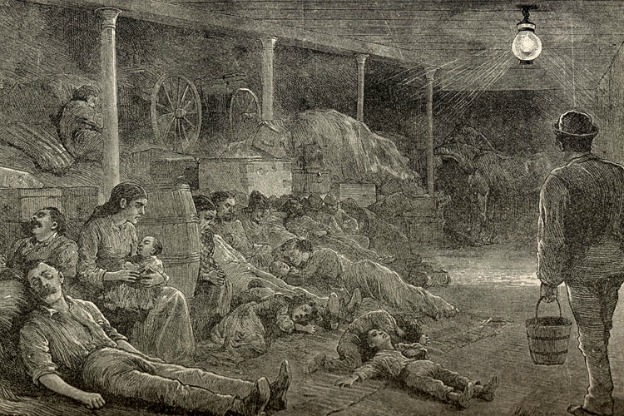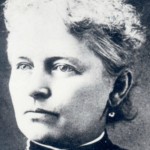In 1849, almost twenty-five years after its founding, the town of Lafayette, Indiana, was a county seat with more than six thousand residents, and could boast of being the state’s fourth largest town. Politicians and business leaders, doctors, lawyers, and clergymen were all proud to promote their city and its advantages. The last thing they wanted to face was an epidemic that threatened the lives of citizens and the growth and reputation of the community.
Nevertheless, by the summer of 1849, Lafayette, like other Midwestern cities and towns, was facing a major outbreak of cholera.
During the winter and early spring of 1848, cholera spread from Europe to the east coast of the United States and then into the interior via rivers and roads. Towns did what they could to prevent the disease from striking citizens. No one knew what caused cholera—one explanation blamed a miasma in the air that emanated from any kind of filth that lay in streets and alleys and inside homes; other experts put the blame on individuals—drinking alcohol, consuming unhealthy foods (particularly fruits and vegetables), living a life that was dissolute or intemperate in any way could invite the disease.
Town leaders appointed local doctors to a board of health; streets and sidewalks and alleys were cleaned and swept; a local ordinance made it a crime for grocers to sell fruits and vegetables; doctors and local pharmacists began to stock up on their own anti-cholera tonics.
By June 1849, it was clear that cholera had arrived in Lafayette. The local newspapers reported the first cases; the board of health issued an initial report. As the disease spread through the town, the newspapers and the board fell silent, not wanting to broadcast the town’s plight. Many residents took matters into their own hands and simply fled. Accounts from the period suggest that at least one-third of Lafayette citizens left for the countryside or for the homes of friends and relatives living elsewhere—some estimates claim that three-quarters of the town’s population disappeared for several weeks.
Doctors, one druggist, a few shopkeepers, two of the town’s eight clergymen, and many other citizens remained in Lafayette. Cholera moved quickly through inhabited areas—deaths often occurred within a day or two of the afflicted falling ill—and by early August the local newspapers could report hotels re-opening, businesses returning to their usual hours, and sermons being preached at local churches.
By mid-September, things were almost back to normal and the city once again allowed grocers to sell fruits and vegetables. Best estimates are that at least 300 people in Lafayette died from the 1849 cholera outbreak—higher estimates suggest as many as 800 dead.
Cholera broke out again in Indiana, including Lafayette, in 1854 and 1867. By the 1880s, as the microbial origin of the disease was finally accepted and U.S. towns and cities began investing in clean water and proper sewage disposal, cholera epidemics became a thing of the past in Indiana.
Source: Joan Marshall, “Cholera in an Indiana Market Town: Boosters and Public Health Policy in Lafayette, 1849,” IMH September 2002.
A Moment of Indiana History is a production of WFIU Public Radio in partnership with the Indiana Public Broadcasting Stations. Research support comes from Indiana Magazine of History published by the Indiana University Department of History.























